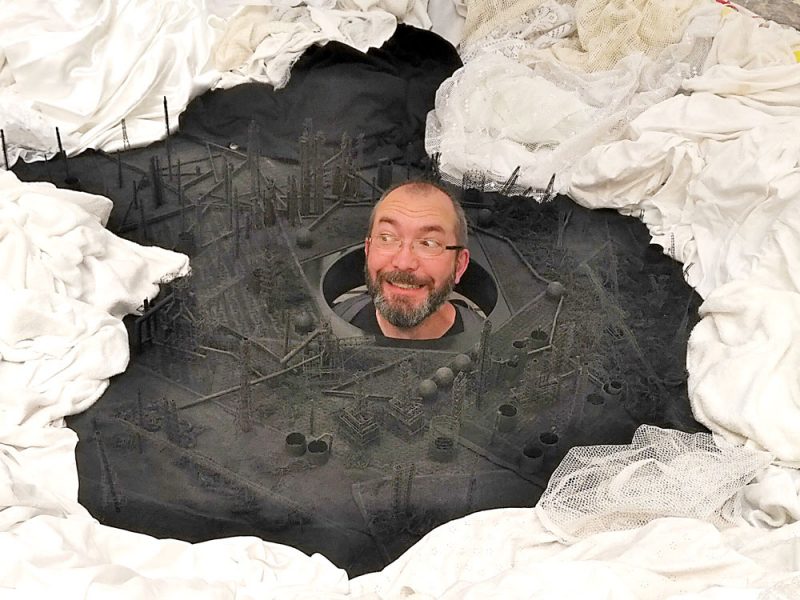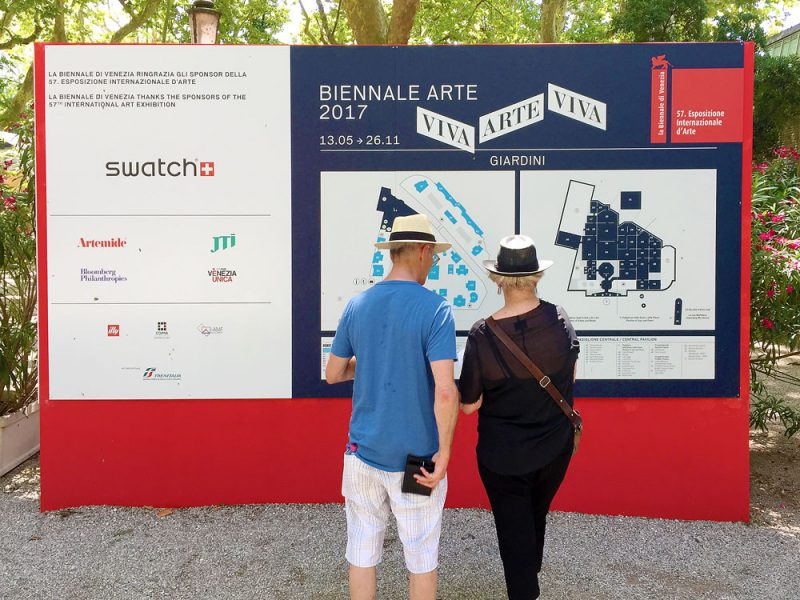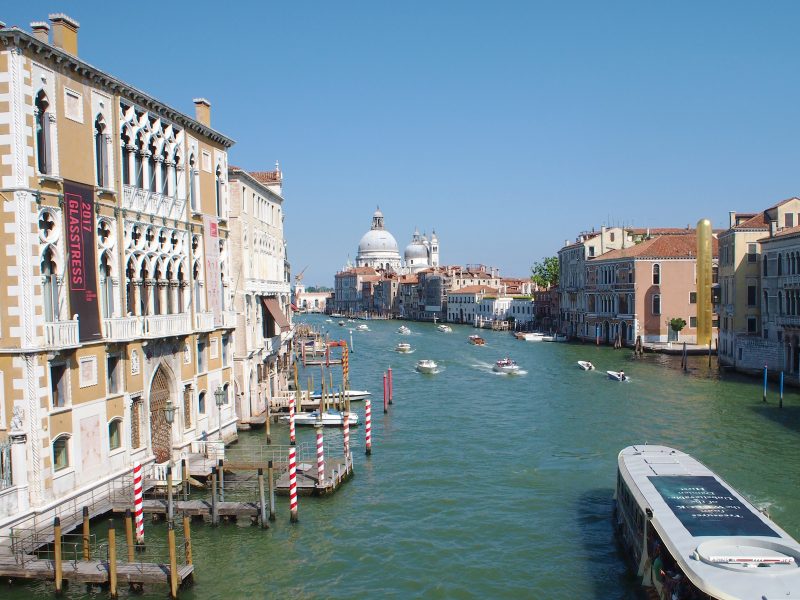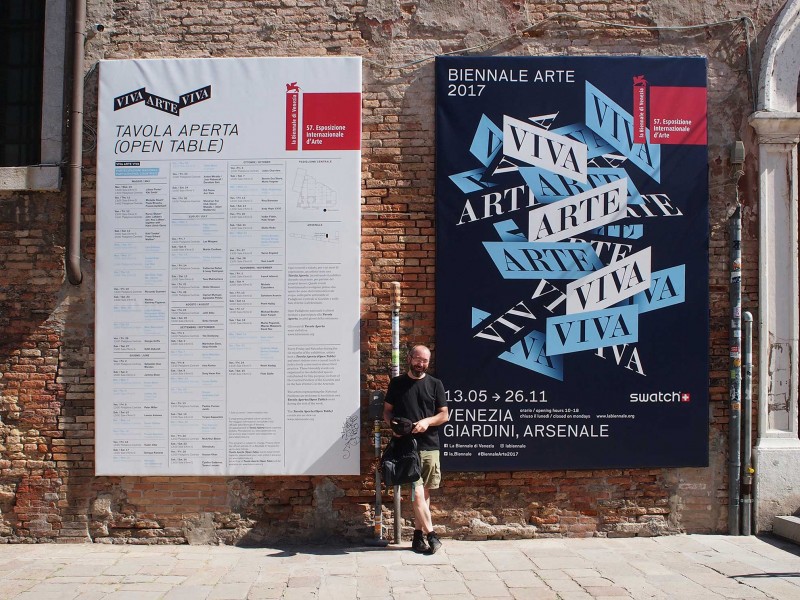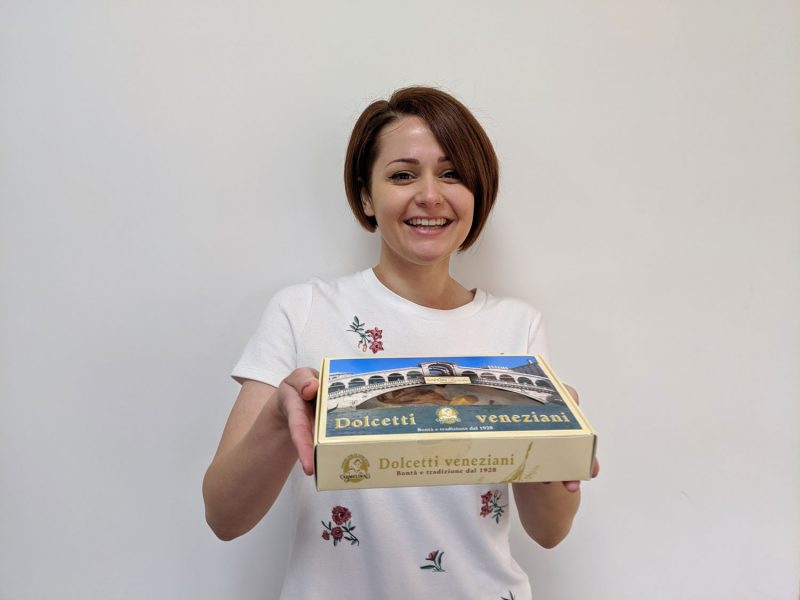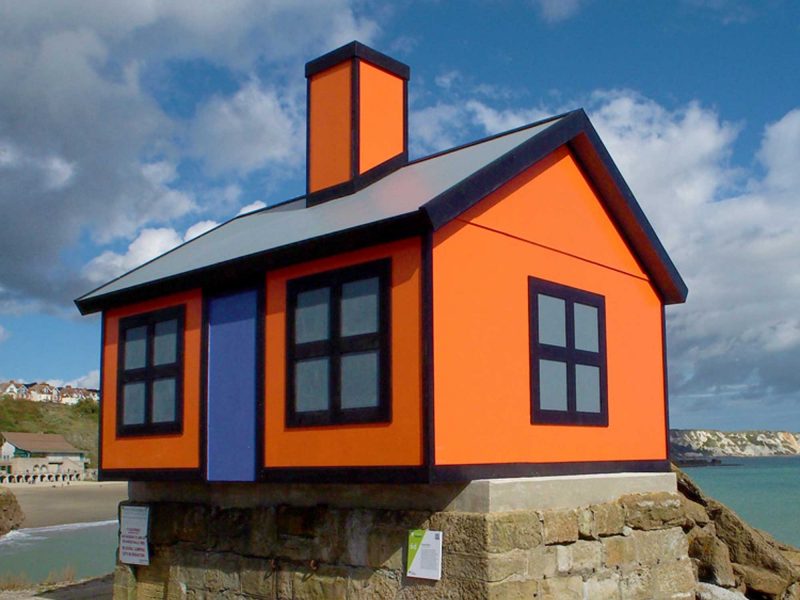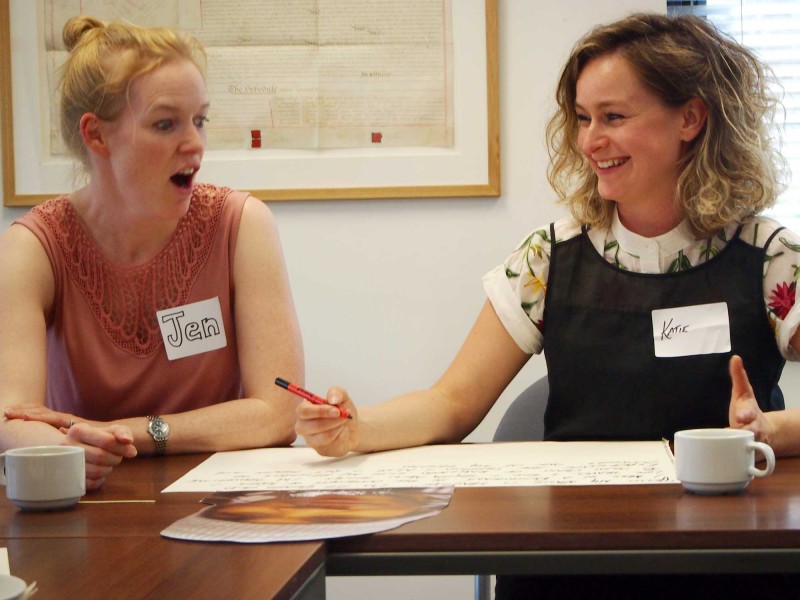Looking at the Venice Biennale national pavilions within the Arsenale site.
Venice Biennale ’17 – Arsenale
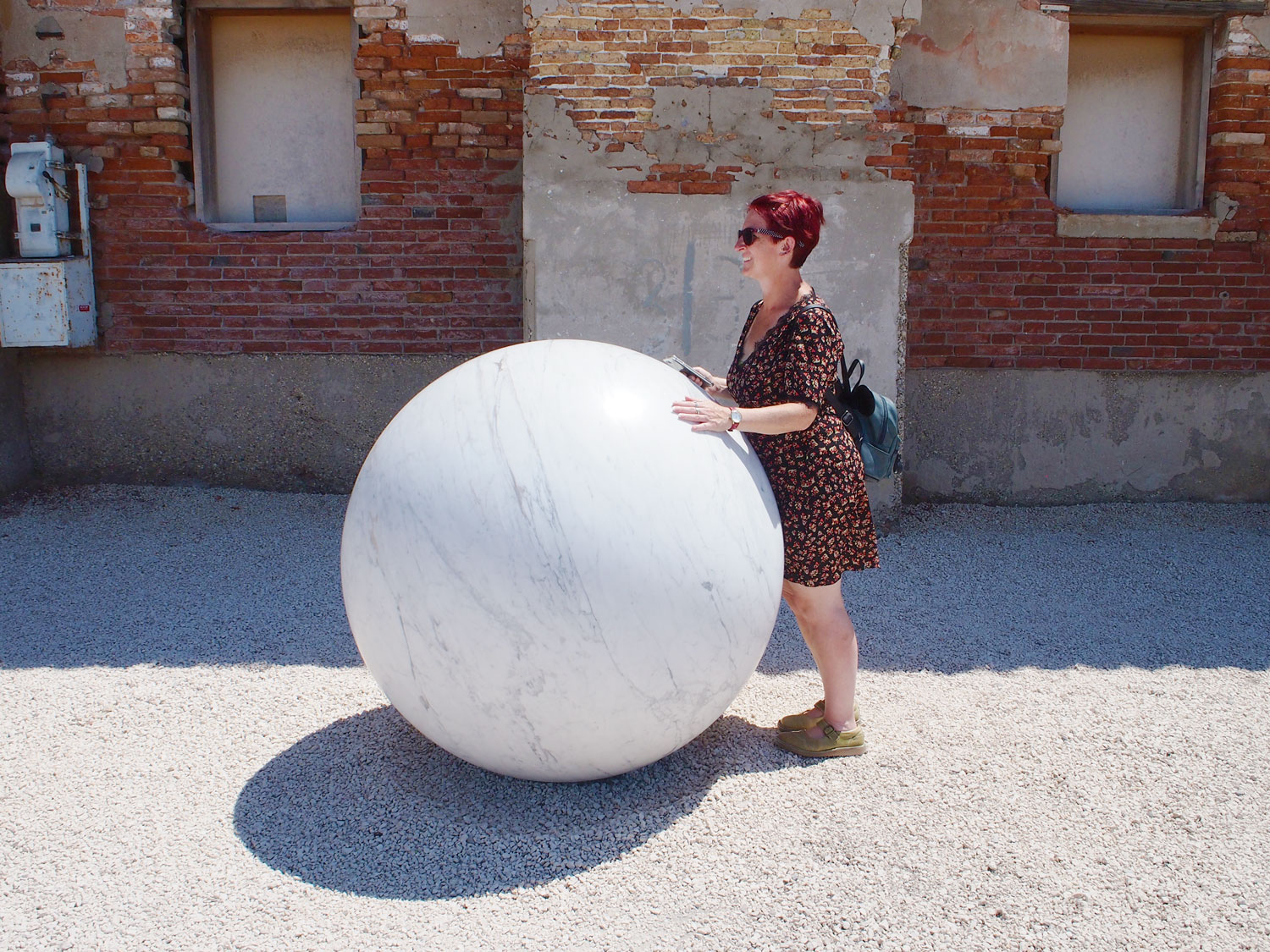
For our ongoing tour of the National Pavilions, we’re back in the Arsenale, where (as I understand it) countries can rent outbuildings and pay by the square metre.
Irish Pavilion
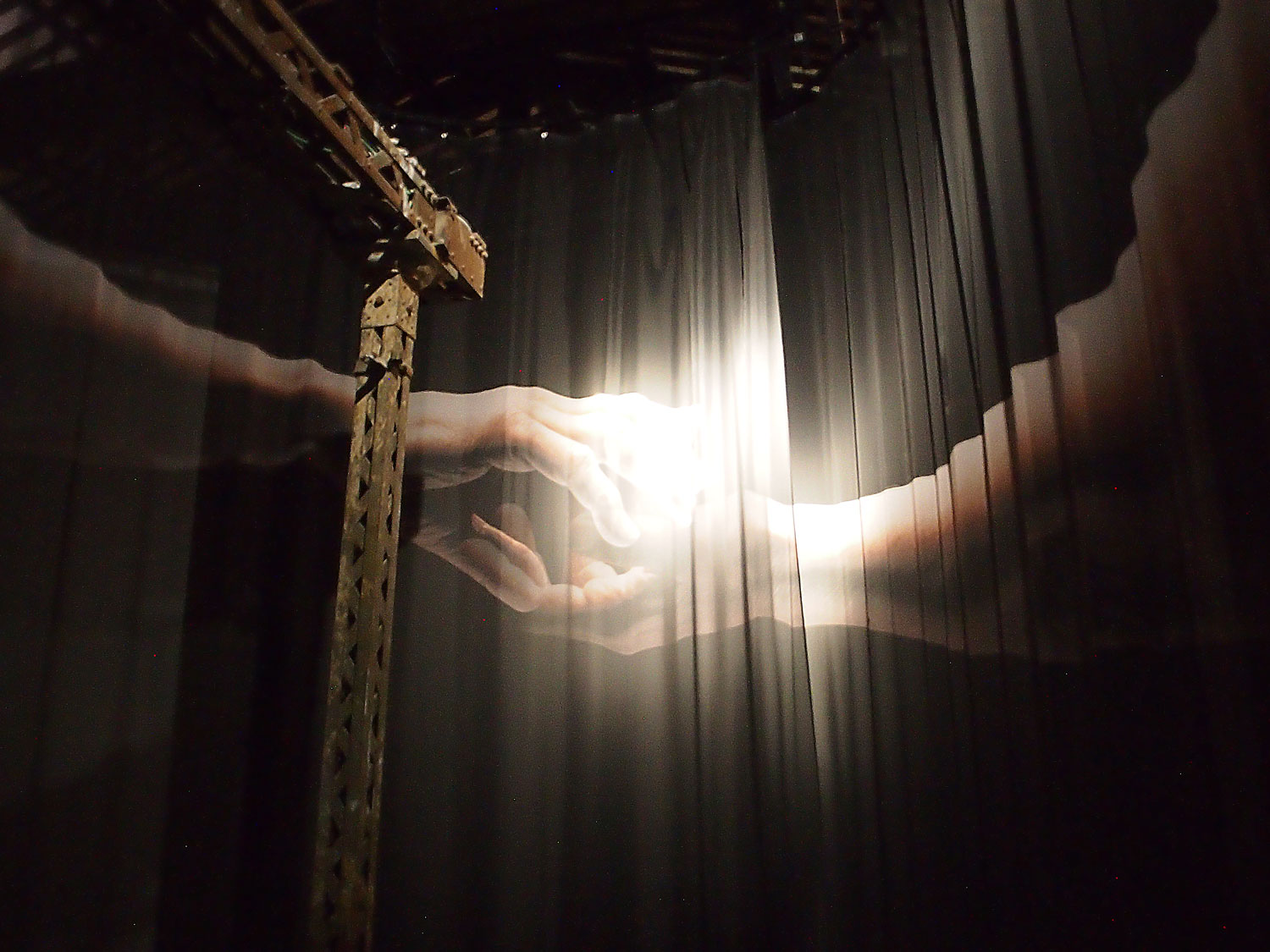
Two curtains drawn together during the display of Tremble Tremble by Jesse Jones.
Jesse Jones presents “an expanded form of cinema” – a video installation featuring actress Olwen Fouéré, whose character jumps between scenes and screens, is often filmed backwards and shown forwards (like a David Lynch film), and at times is genuinely terrifying.

The piece takes its title from chants of Italian homemakers who went on strike for wages in the 1970s, chanting “Tremate, tremate, le streghe sono tornate! (Tremble, tremble, the witches have returned!)”.
The work deals with issues around the separation of church and state in Ireland.
My favourite part was when the ‘gallery attendant’ turned into performance artist, strutting through the space with one curtain that partially encircled me, then she did it again from the other direction. Each curtain was printed with a hand so they joined clasping me inside.
Argentina Pavilion
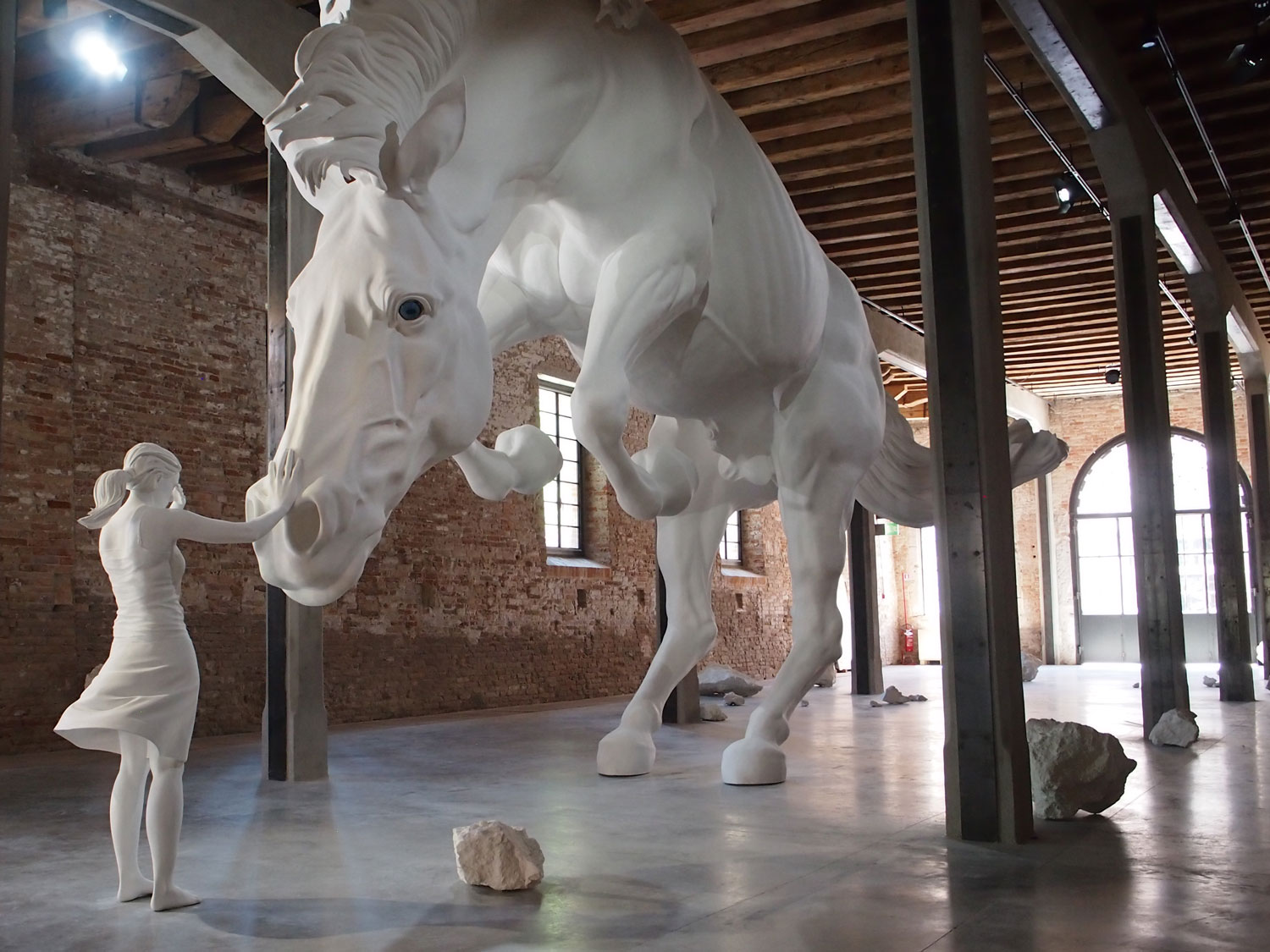
The Horse Problem, Claudia Fontes
“Horses are afraid of two things”, states the accompanying leaflet to this show.
“everything that moves and everything that does not move”.
In this crowd-pleasing installation, Claudia Fontes uses a girl to stop a charging oversized horse in its tracks. It’s like a scene from a magic realist film.
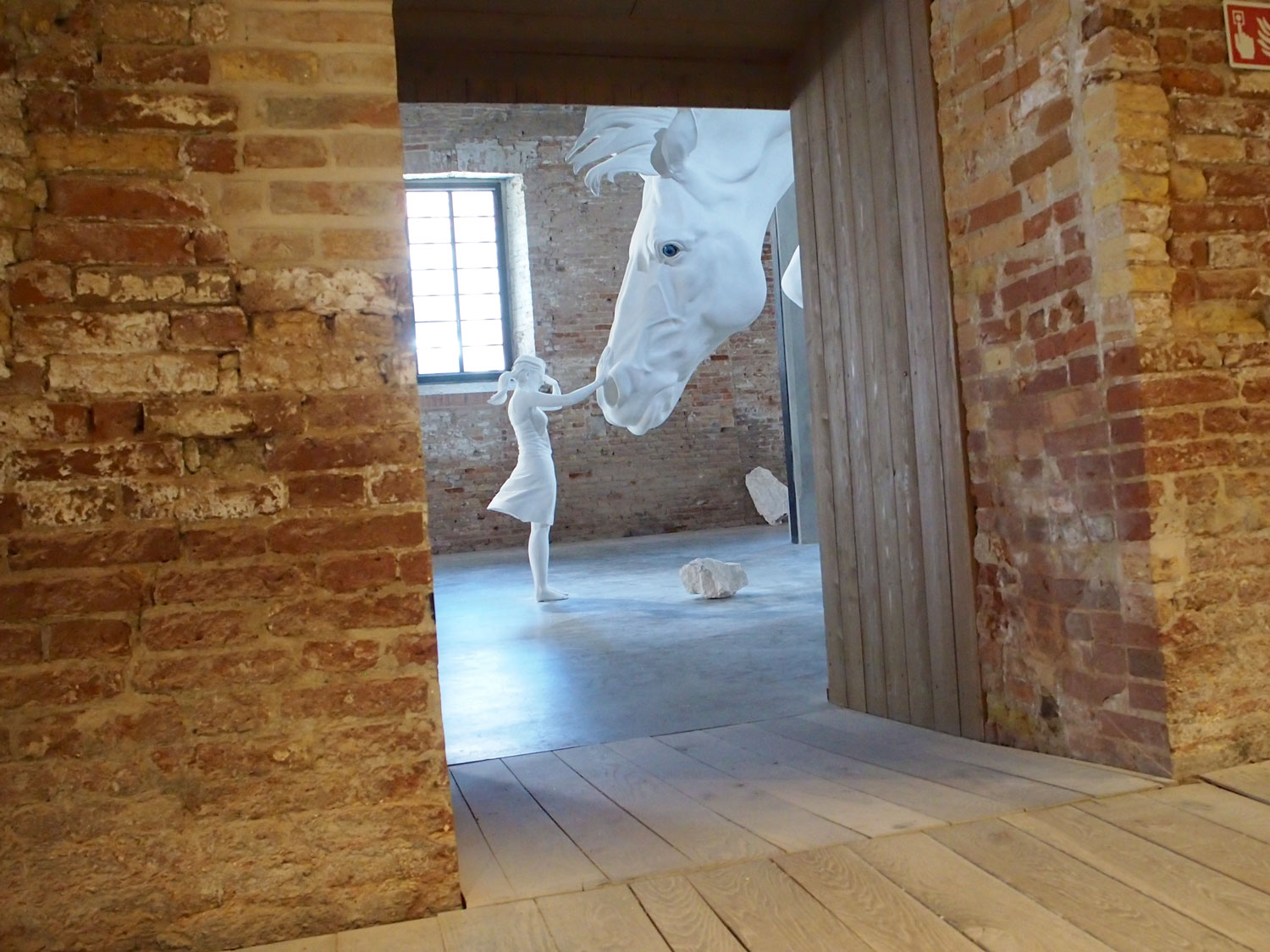
The Horse Problem, Claudia Fontes
It’s a powerful piece in every sense of the word, and it makes for great photos on social media.
Pavilion of Chile
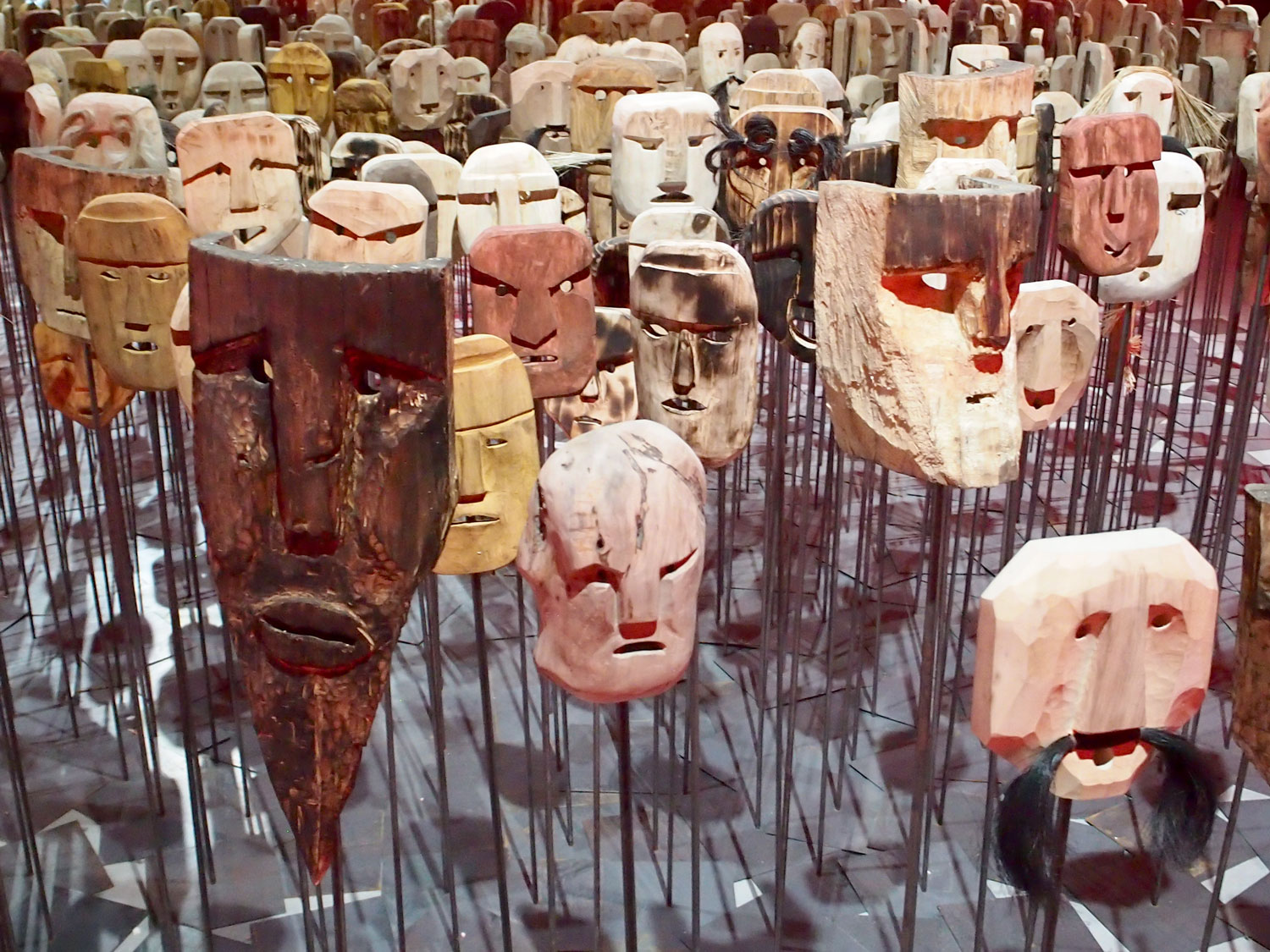
Werken, Bernardo Oyarzun
Bernardo Oyarzun presents a room, filled with 1500 masks, made by 40 crafts people from the Indigenous Mapuche community (of which the artist is a member). Around the walls an LED screen displays almost 7000 Mapuche surnames, names that have endured despite state attempts to wipe them out.
Each mask is individual, the crowd arranged in a circle so every hollow eye fixes you with a stare as you walk around them.
Pavilion of Tunisia
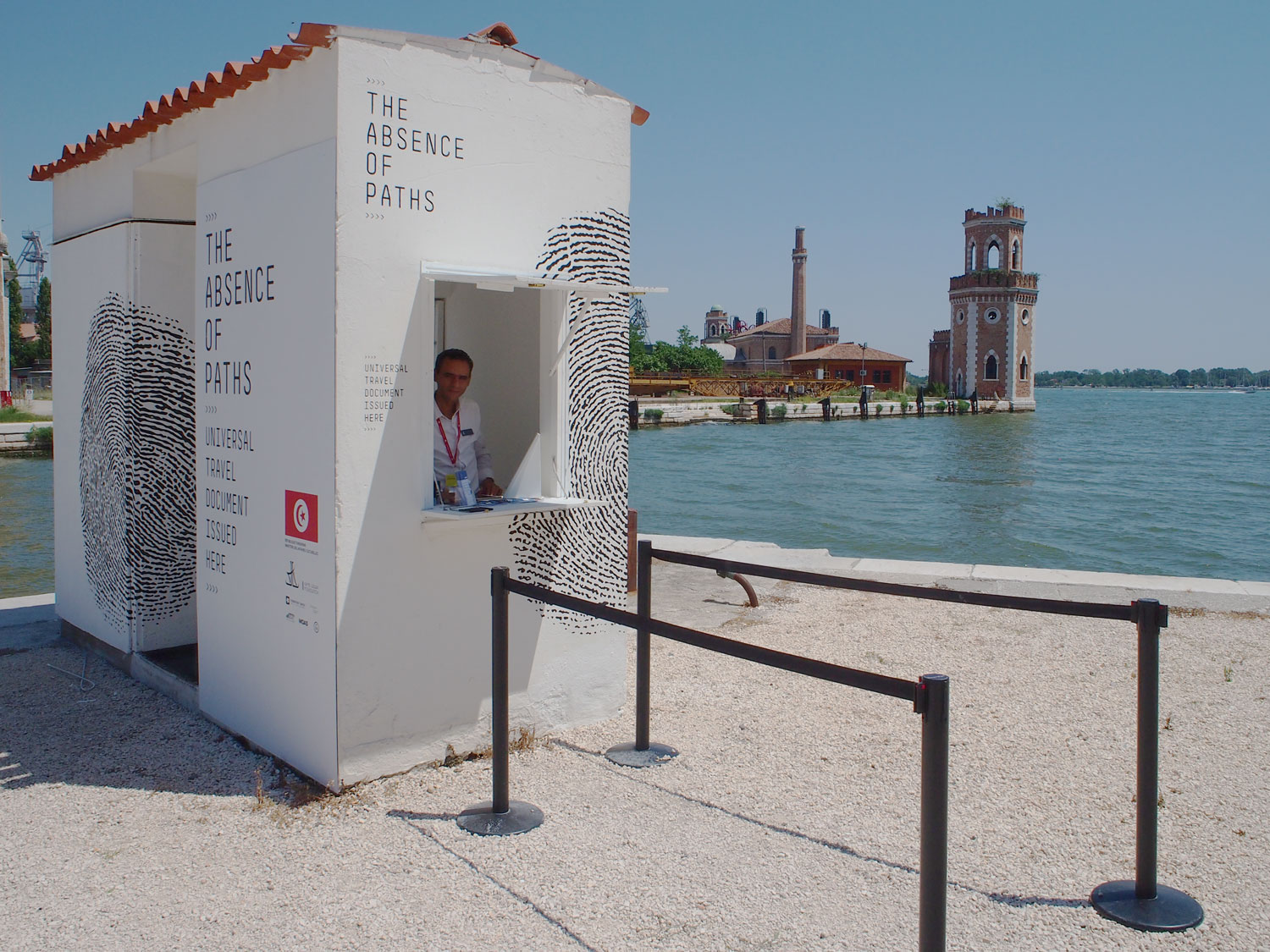
The artist collective, The Absence of Paths, have taken a conceptual approach. Within their pavilion, and at a booth, outside on the dockyard, members issue each applicant with a ‘Freesa’ – a ‘universal travel document’.
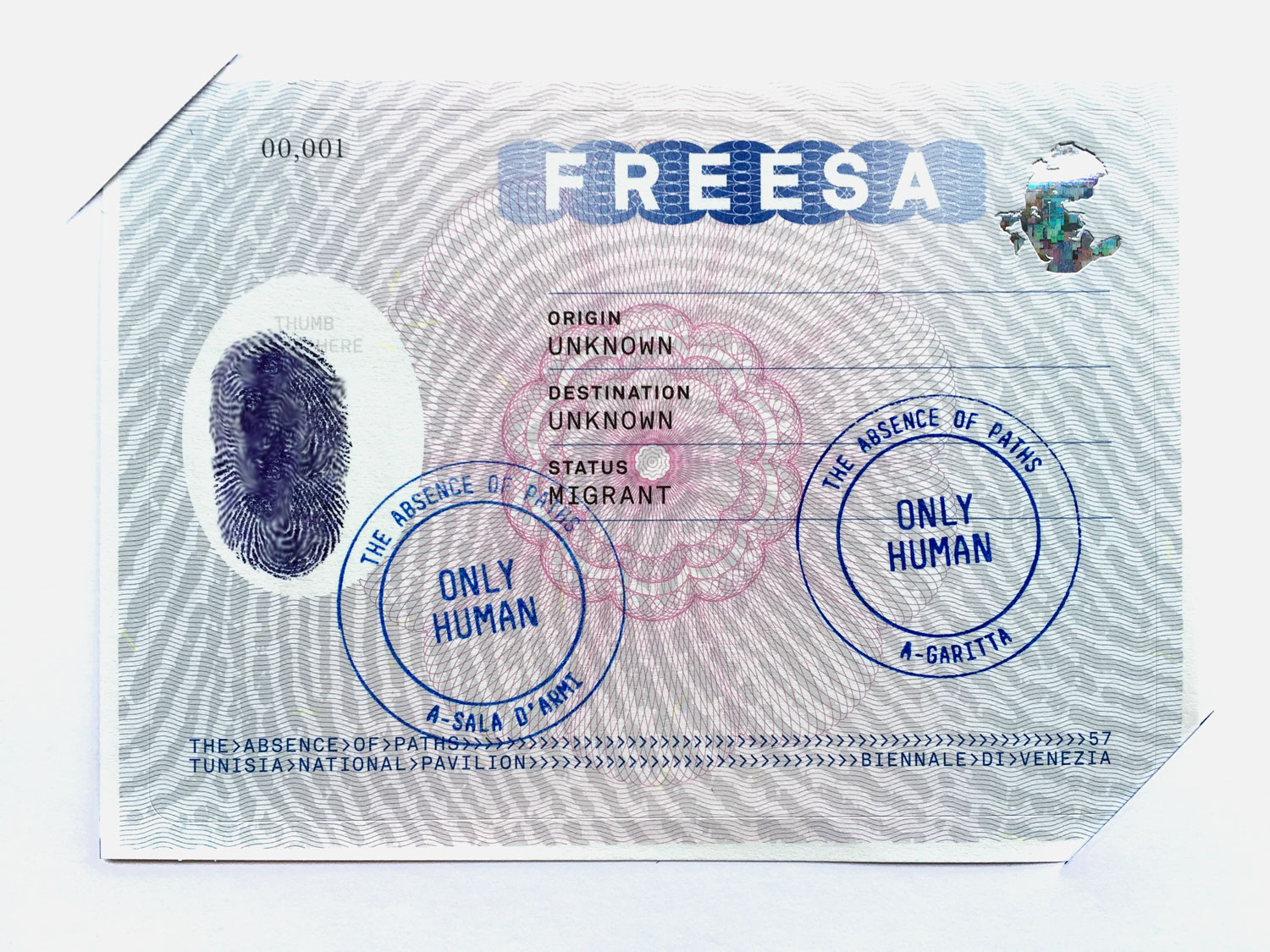
The travel documents are inserted into blue passports, printed with some terrifying statistics about the refugee crisis: 3.2 million people are currently in limbo.
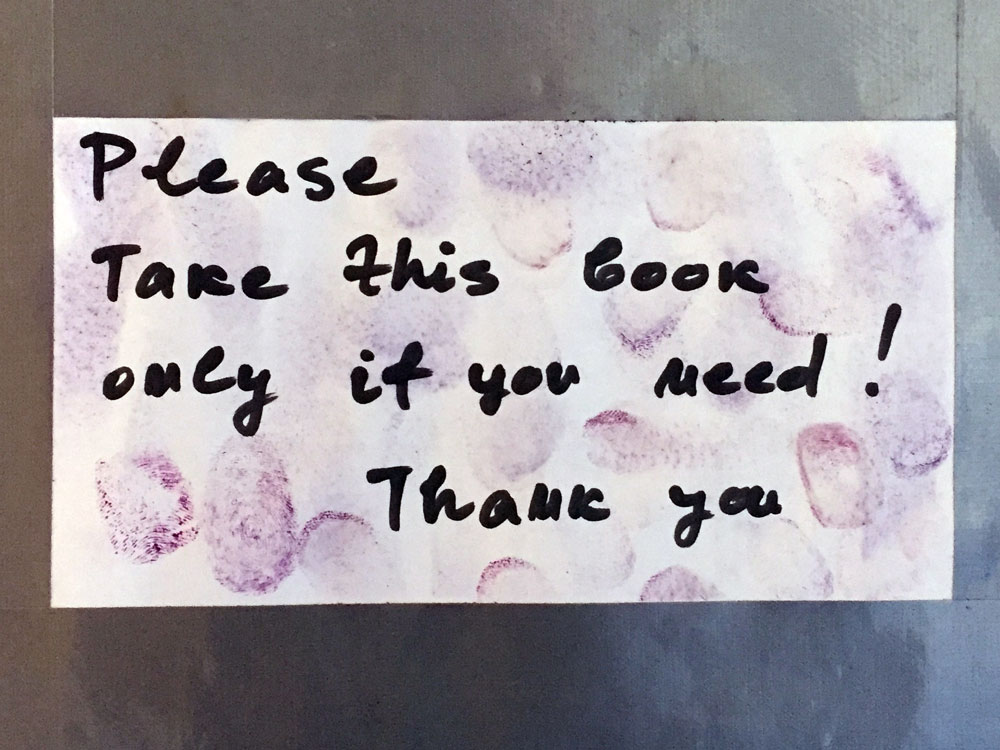
Although I very much enjoyed the interaction, I’m not sure the other artists and pavilions will be so pleased. Each applicant had their thumbprint taken with blue ink, and those blue thumbs continued to make their mark a long way around the exhibits.
Pavilion of Italy
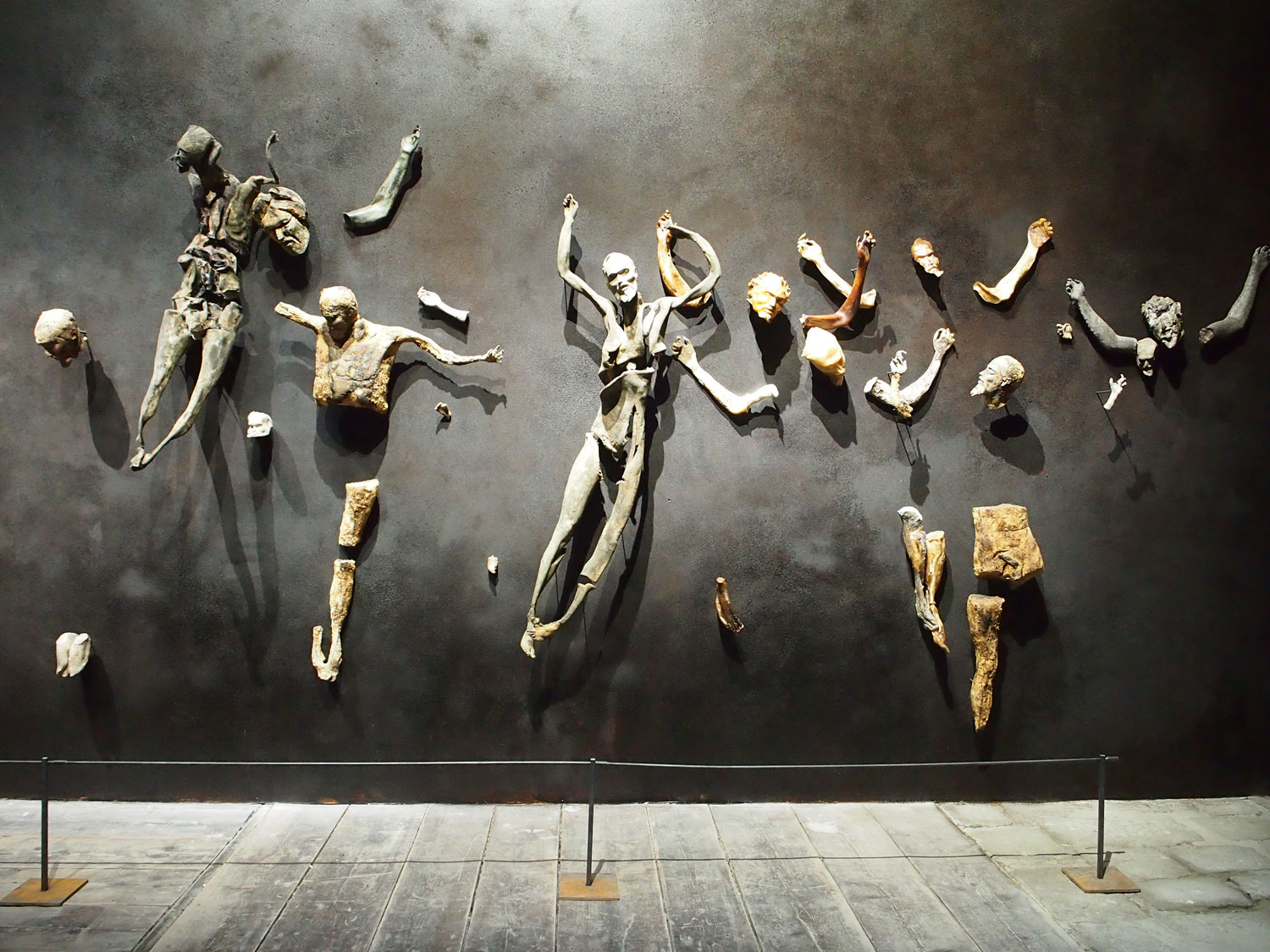
Imitazione di Cristo (Imitation of Christ), Roberto Cuoghi
In the Italian pavilion curator Cecilia Alemani has worked with Giorgio Andreotta Calò, Roberto Cuoghi and Adelita Husni-Bey to create the truly creepy Il mondo magico (The Magic World).
Inspiration is taken from a book (of the same name) by Italian anthropologist Ernesto de Martino who wrote about magic, rituals and faith during times of crisis.
Central to this installation, casts are made of the body of a Christ-like figure, hardened in a furnace, and then displayed within the pods of an inflatable research station (like the scene from ET where the scientists surround Elliot’s house). The smell of the chemicals, the heat and claustrophobia of the space, all add to the dissonance you feel, looking at ‘remains’, even though you know they are manufactured.
China Pavilion
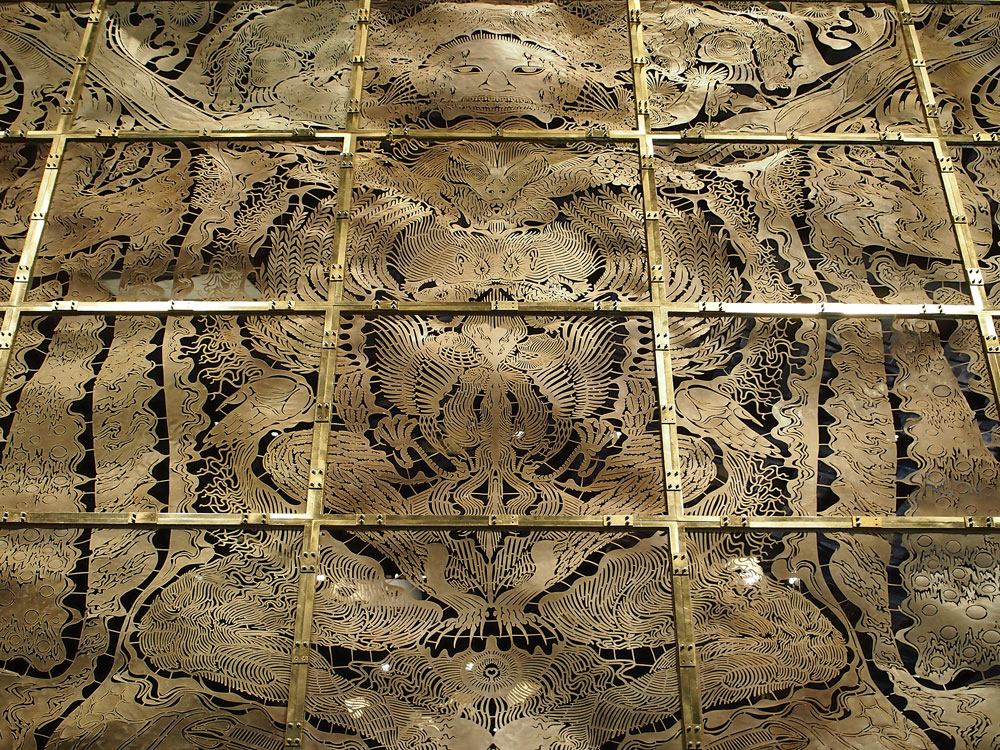
The heaven of nine levels, Wu Jian’an
Continuum – generation by generation is (apparently) an exhibition “focused on the theme of eternity and the profound essence of Chinese wisdom”.
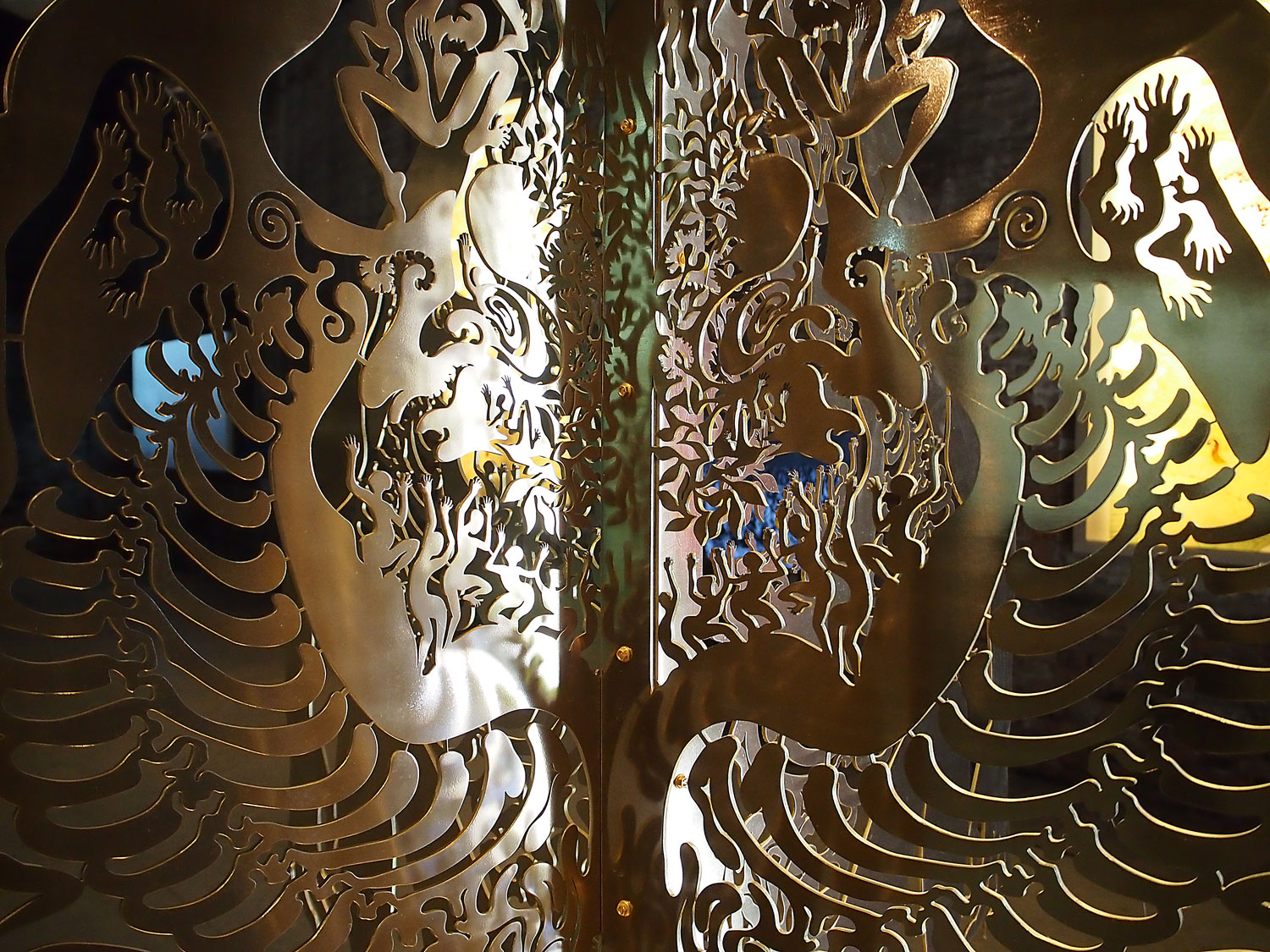
To me it seemed more like a hodge-podge of work that uses the traditions of Chinese crafts to create some stunning contemporary works. Oh, and there was a man with lights projected from his eyes.

Marrow Return, Tang Nannan
Before we leave the Arsenale there are two works of note on the quayside:
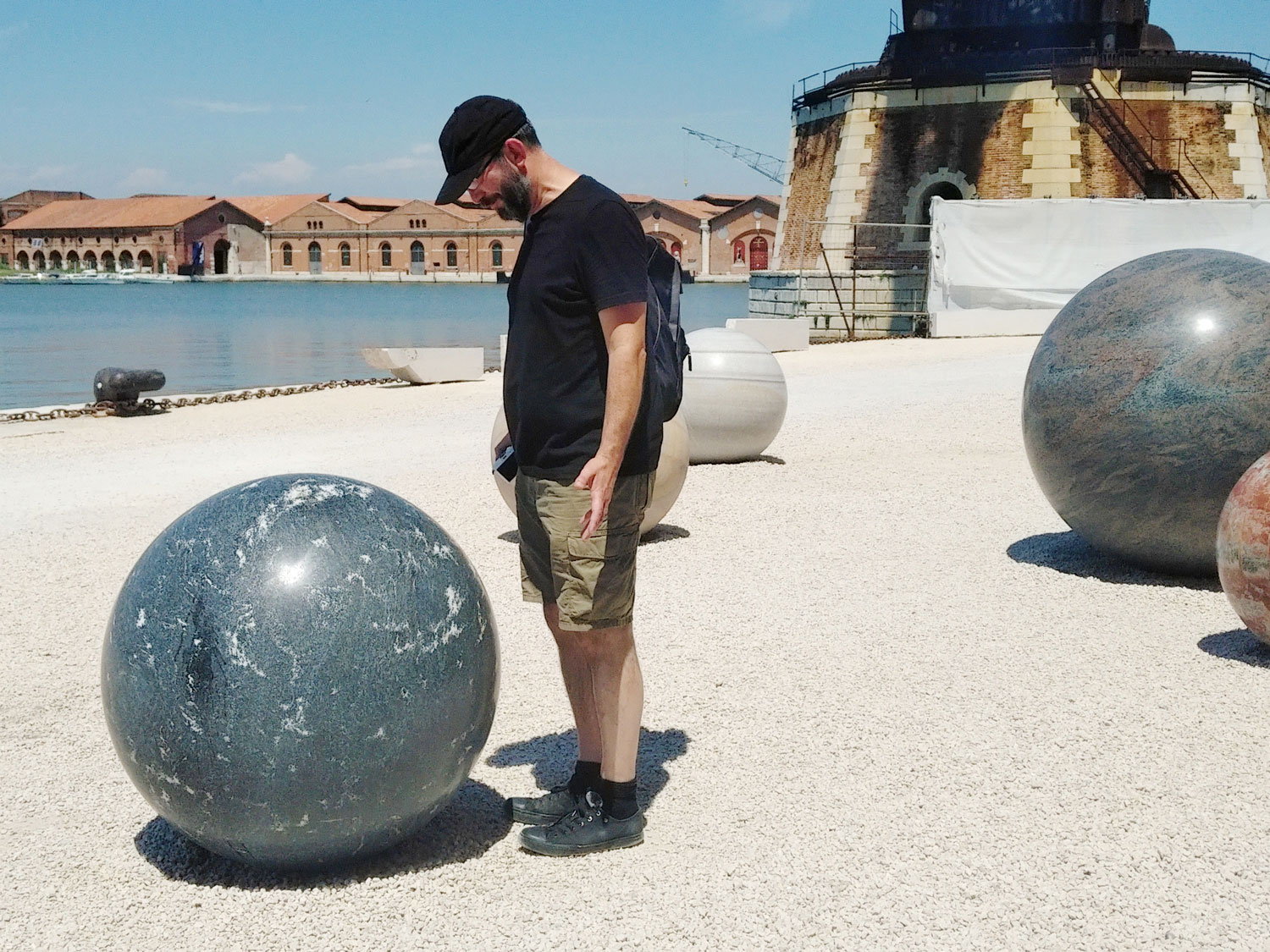
Pars pro Toto, Alicja Kwade i
Polish artist Alicja Kwade has placed spheres of varying sizes and materials on the white gravel. Sound emanates from them, seemingly randomly – sometimes soft, sometimes harsh. The different materials give each planet-like sphere a different quality – some are cool to the touch, others feel as hot at as the sun beating down on them.
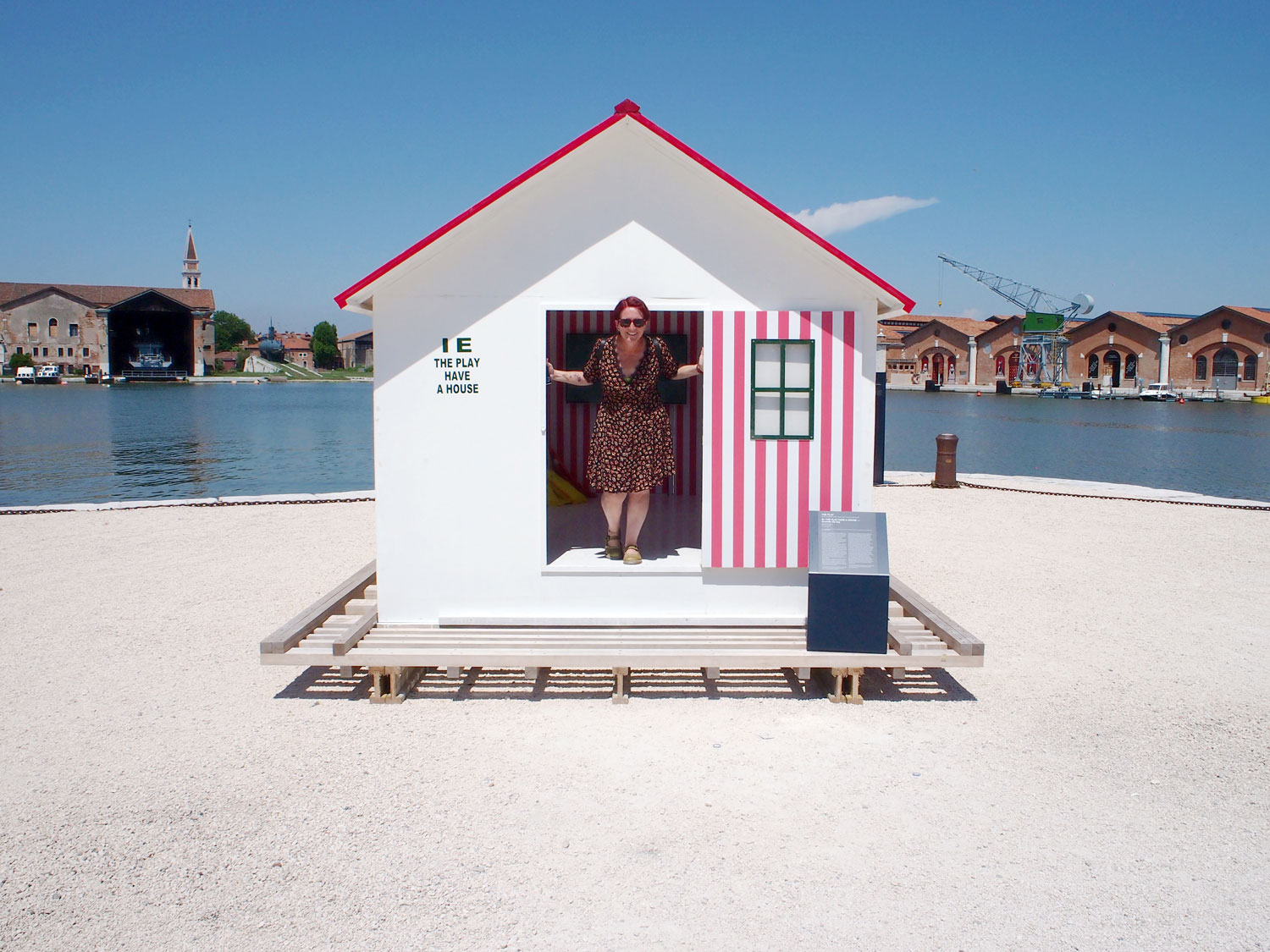
Have a House, The Play
Have a House was a project from the artists’ collective, The Play. They built the floating domicile and ‘sailed’ it from Mount Kasagi towards Osaka Bay, stopping for meals along the way and chatting with the people they met. There is a celebratory retrospective of the 1972 project, inside the Arsenale.
For my final entry, I’ll write about projects and pavilions outside the two main sites and across the city…



